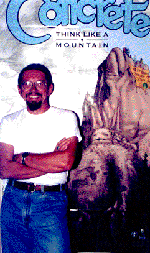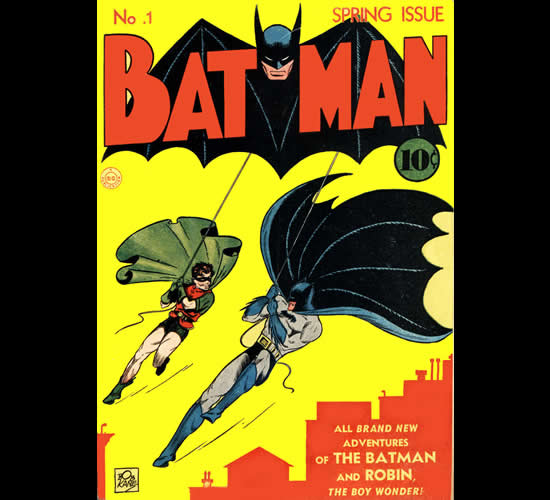
While Mile High Comics is now one of the leading powerhouses of the comic book industry today, it wasn’t always that way. In fact, the business started out as nothing more than a hobby for 13 year old boy selling comic books out of his parent’s basement. In 1969, Chuck Rozanski began flipping comic books at a local flea market in Denver. While the makings of the store were first being cultivated, Denver was experiencing a cultural-industrial change that drastically changed the outlook of the city. Traveling around the city became much more efficient when the highways I-25 and I-70 were completed in 1970, allowing traffic to flow easily from every direction throughout the city and promote the growth of the suburbs. The South Platte River flood of the 60’s also impacted the recreation of the city into an urban neighborhood after it destroyed many buildings around the southern part of the city.

After four years of buying and selling comics, Chuck Rozanski made his first appearance at a national convention; selling rare mint-conditioned comic books at a reasonable price that helped him build his trade. Once he had a gained a sizable fortune, the young entrepreneur finally opened up his first retail store in Boulder, Colorado. With the completion of the highways, and by scouting out good locations around the area, Rozanski was able to construct three more stores around Denver. While the original store is no longer in use, the other four stores are spread throughout the vicinity of the metro Denver area. One of the stores is located in Lakewood, another in Glendale, and the other is in Littleton. The last one to be built is the mega-store placed right next to highway I-70 on Jason Street.
Adolescents are obviously a targeted demographic for selling comic books, and during the 1970’s, three colleges combined for financial purposes and began educating: Community College of Denver, Metropolitan State College, and the University of Colorado at Denver. With more youth coming around the country to attend these schools, Rozanski obtained a whole new group of people to advertise his distinct business to. Jack Perry states how basic American bookstores have become in his article Bookstores, Communist and Capitalist “In short, the needs and wants of the average book buyer are modernly met…The bookstores most everyone goes to nowadays are quite likely the same…and all the little idiosyncratic bookstalls we have known will before long merge into great marketing combines that will offer identical outlets in every American shopping center” (109). His approach to selling was unique though, since there may be plenty of bookstores in the area, but he controlled the entire comic book market which presented him with more opportunities to expand in a capitalist city.
 Rozanski made an ingenious acquisition that gave him full control of practically everything comic book related when he purchased Golden AgeComics, giving him the largest and highest quality comic book collection ever discovered. It was a difficult transaction to pull off because of how much it cost. But by pulling it off, it made him the most powerful figure in the comic book industry, providing him with mint copies of every comic ever published from 1938-1950. It also changed his outlook on how he sold comics, because now he could go from simply selling comics for profit, to becoming a leader of an industry in need of someone to step up and promote the unique form of literature.
Rozanski made an ingenious acquisition that gave him full control of practically everything comic book related when he purchased Golden AgeComics, giving him the largest and highest quality comic book collection ever discovered. It was a difficult transaction to pull off because of how much it cost. But by pulling it off, it made him the most powerful figure in the comic book industry, providing him with mint copies of every comic ever published from 1938-1950. It also changed his outlook on how he sold comics, because now he could go from simply selling comics for profit, to becoming a leader of an industry in need of someone to step up and promote the unique form of literature.
Rozanski’s quest to spread the popularity of comic books is not an uncommon notion, with the publishing industry always looking for new ways to sell books. As Archibald MacLeish states in his essay A Free Man’s Books pertaining to the Nazi’s fear of books “These Nazis perpetrated their obscene and spiteful act because they knew that books are weapons and that a free man’s books such books as free men with a free man’s pride can write-weapons of such power that those who would destroy the world of freedom must first destroy the books that freedom fights with” (6). While it might be skeptical to think about comic books as weapons, the fictional universes that inhabit them provide heroes that defeat the evils of their world. These morals ingrain themselves in the minds of anyone who reads them, giving individuals creative concepts they need to help conquer the everyday problems that they must deal with.
In the 1970’s Denver was thriving, with the oil industry paving the way for a new look on Denver. A large portion of the working class had come to rely on the oil fields nearby the city for work. After World War II, the oil industry was booming and many locals had jobs that provided a solid income with good benefits. When the tycoons of the industry fell apart and the oil boom dissipated however, many people were laid off, seriously hurting the economy of Denver, which resulted in the failure of multiple large industrial banks. Many people lost their homes and their savings when the government seized approximately $2 billion from the banks in the early 1980’s. The other businesses of the area continued to thrive however, and Mile High Comics was no exception. The store was a hit, with people flocking from all around the country to purchase comics from the industry giant.
After World War II, the city of Denver resembled a suburban neighborhood that was difficult to navigate due to everything being spread apart, but after the highways were completed, and the elite class constructed large buildings around the area, the outlook of the city took on a much more urban appearance. The creation of the Republic Plaza, the City Town Center, and the enormous 52-story United Bank Tower provided the large skyscrapers for tourists to gaze at in awe. In 1979, the Performing Arts Complex finally gave the people of downtown Denver a sophisticated location to enjoy the talents of many different artists. The reshaping of Denver’s infrastructure made it an attractive place for people to come and visit.
The new generation also took control of the city and assisted in the crafting of a ‘New Denver’. They restored the old run-down buildings of the city to provide new places for people to live in the city, and repaired the damage left by the floods of the 1960’s. In fact, they were so effective in saving the old buildings that all of the damage left by the suburban landscape had been repaired, along with the flood damage. People rushed back into the city, greatly increasing the population of Denver, along with providing a stronger commerce in the area. This only boosted the profits of Rozanski and the comic book giant that he had built.
Through all of the major changes that were occurring in Colorado through the latter half of the 20th century, it’s admirable to see that Mile High Comics has been able to fight through all of the turmoil and stay relevant despite just being another bookstore. Yet comic books became all the rage during this generational revolution that completely revamped how society saw different aspects of the culture during this time. Chuck Rozanski has received over 500,000 back issue orders from all across the globe that has proven how important reading really is to people in an age where technology has become the dominant mainstay in recent decades. Having over 20,000 subscription members that purchase from his stock on a monthly basis doesn’t hurt the cause either. Because of this and from the continued appearances at conventions in Colorado and California, Mile High Comics has been able to expand their reputation of success. The store now boasts the largest collection of comic book merchandise in the world, and I doubt that it will be declining anytime in the near future. Here is a timeline that shows many of the important events that occurred for Mile High Comics and Denver in the latter half of the century:

0 Comments